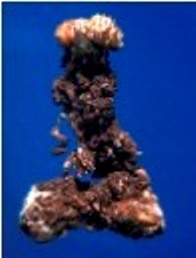InteractionsInteractions
Who else do I come in contact with?
Cordyceps subsessilis may interact with various different species, but none that we really know about except for that of the Scarabaeidae beetle larva. Of course, other animals that live in the woods can come into contact with it, but these are just very mild occurrences, no symbiotic relationships.
As I already mentioned on the nutrition page, Cordyceps subsessilis feeds on larvae from the Scarabaeidae family. More than just feeds, but has a symbiotic relationship with this arthropod. Symbiotic relationships don't have to be all nice - some can be beneficial and others can be detrimental to one organism in these interactions.
As you have probably guessed by now, the symbiotic relationship between Cordyceps subsessilis and the beetle larva is parasitism and only C. subsessilis benefits from this interaction while the larva is harmed in the process. By feeding on the larva's body and tissues, C. subsessilis is able to gain energy and nutrients and at the same time, the larva is dying because it is being digested alive.
Another organism that Cordyceps subsessilis comes in contact with is human beings, themselves! This interaction is vitally important because this fungus produces a chemical that aids in a big part of the medical field! Also, a lot of people actually avidly search for members of the Cordyceps genus. These fungi are sometimes quite rare and are a treat when trained mycologists or searchers find them. Some members also have other wonderful uses that are necessary to us.
If you have been enjoying what you are reading, then continue on to the main reason why C. subsessilis is so important, click here to learn about cyclosporine!
If this doesn't tickle your fancy, click here to return to the home page!

